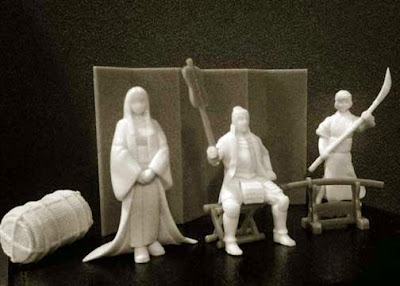More 1:35 samurai gashapon.
The terms gashapon (ガシャポン)
or gachapon (ガチャポン)
refer to variety of vending machine-dispensed capsule toys popular in
Japan and elsewhere. "Gashapon" is a Japanese onomatopoeia
composed of two sounds: "gasha" (or "gacha") for
the sound of a crank on a toy vending machine, and "pon"
for the sound of the toy capsule dropping into the receptacle.
Gashapon may describe both the machines themselves and the toys
obtained from them. In recent years, the term gashapon has
also come to refer to blind-box trading figures, which are
essentially the same product sold randomly out of sealed packages
instead of a machine.




Comments
Post a Comment